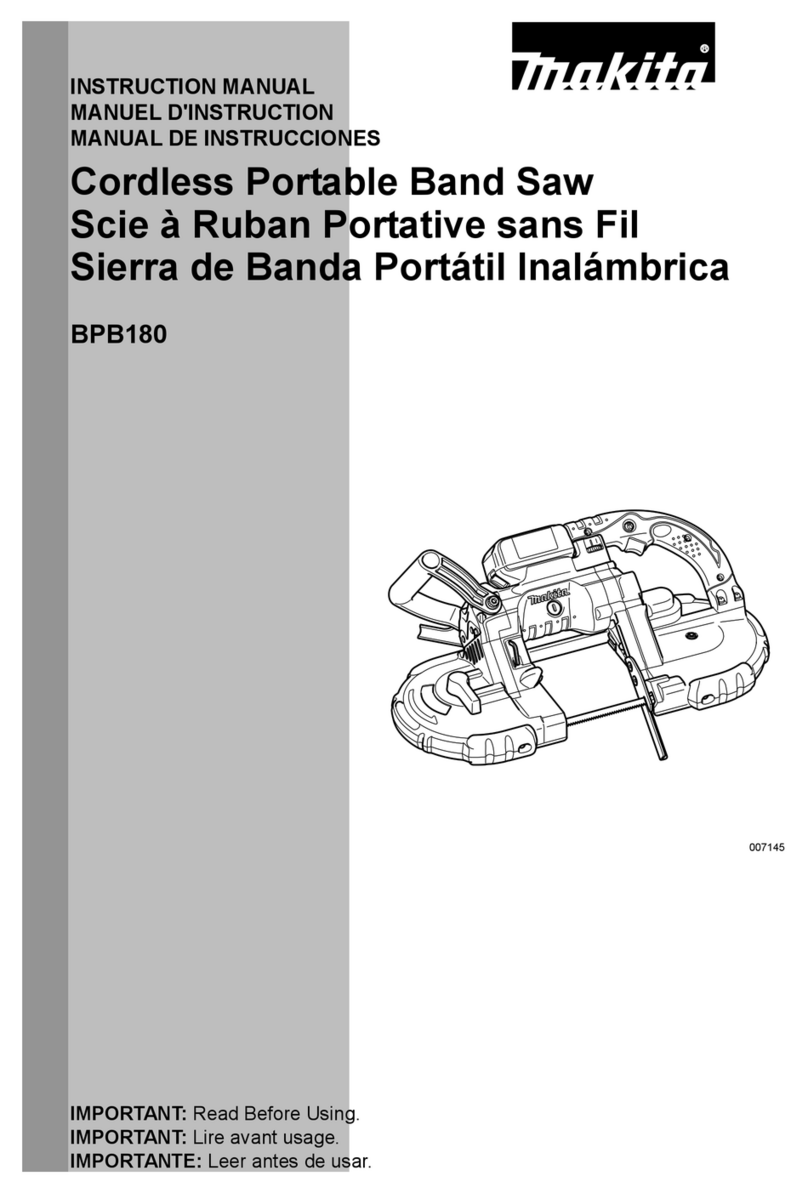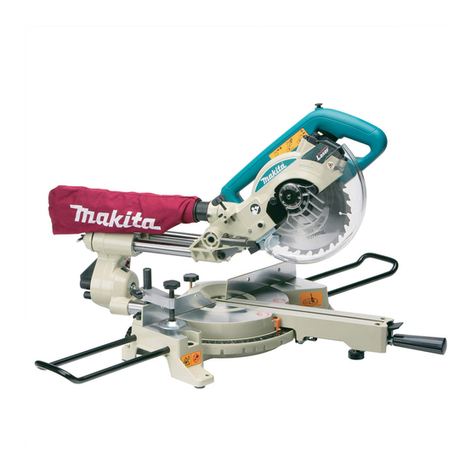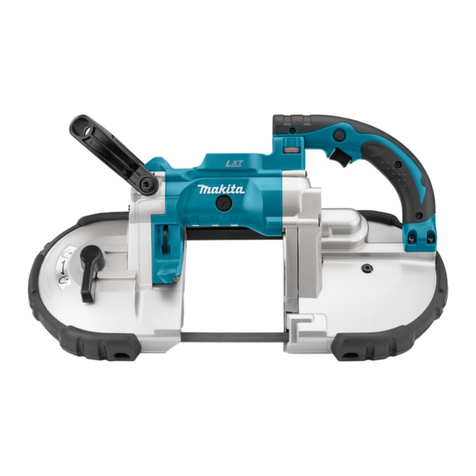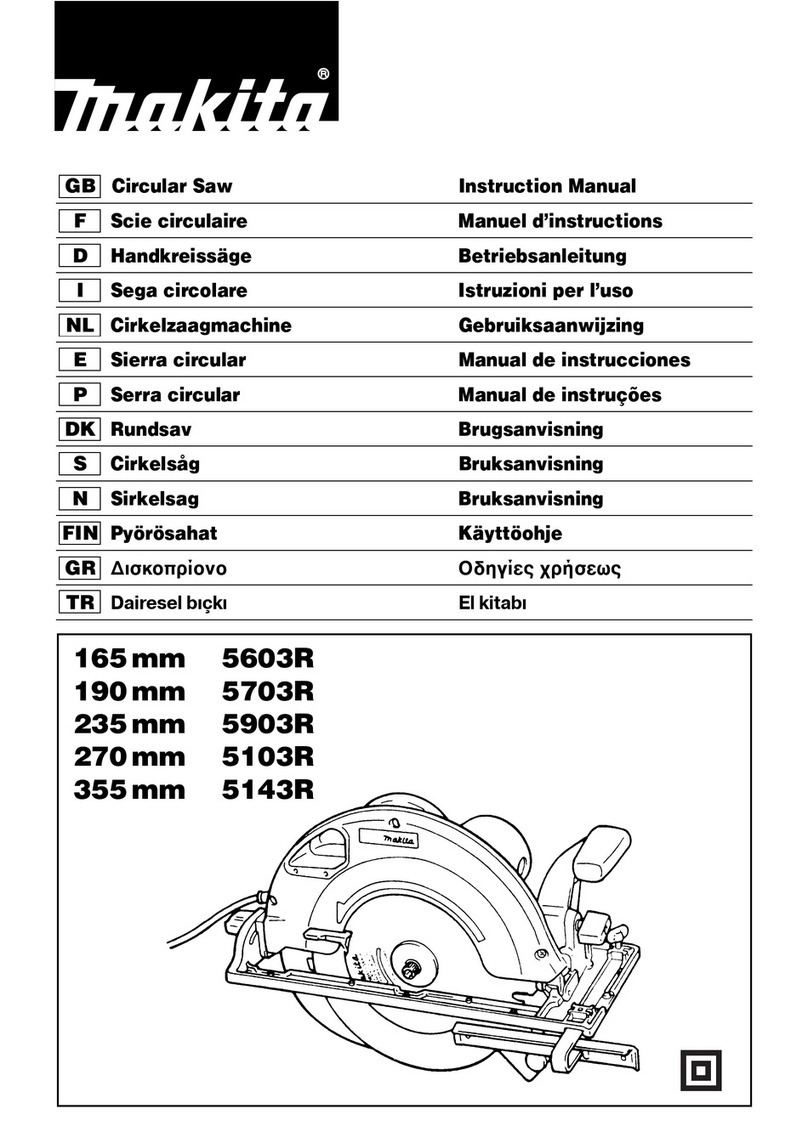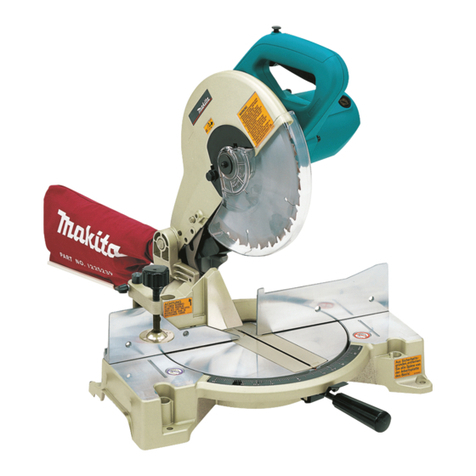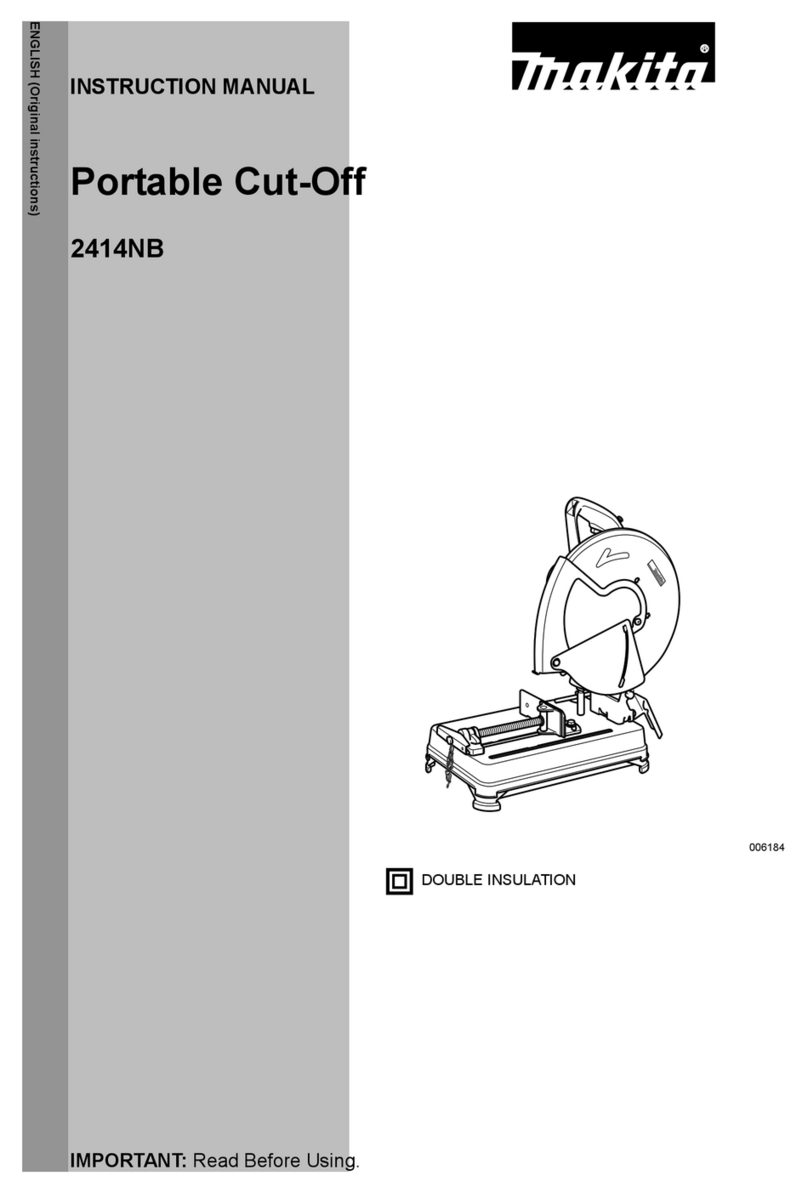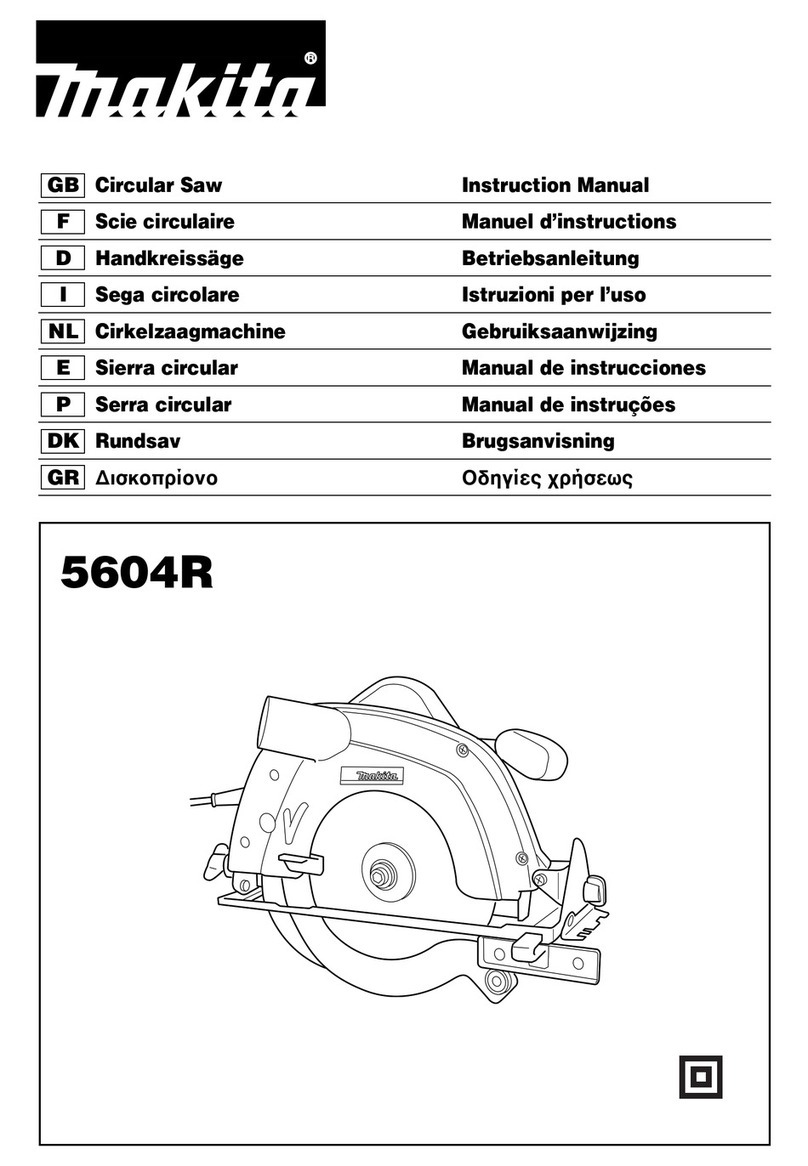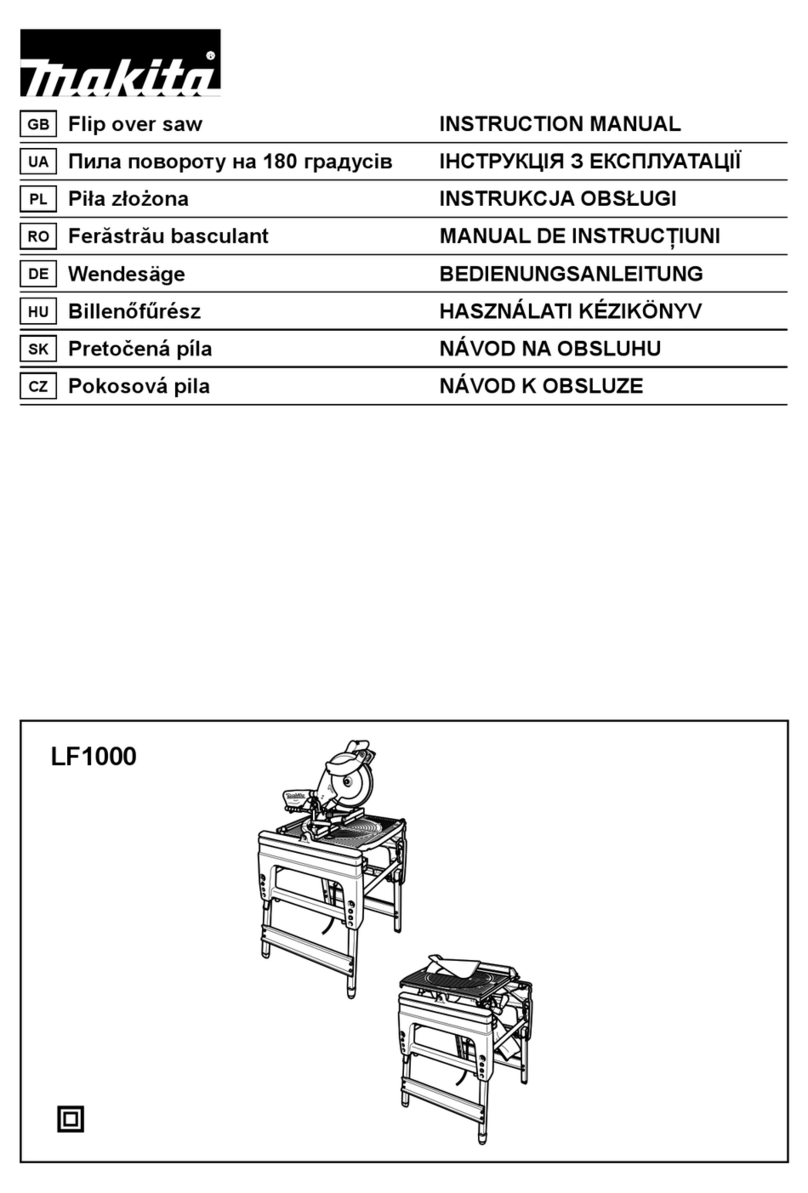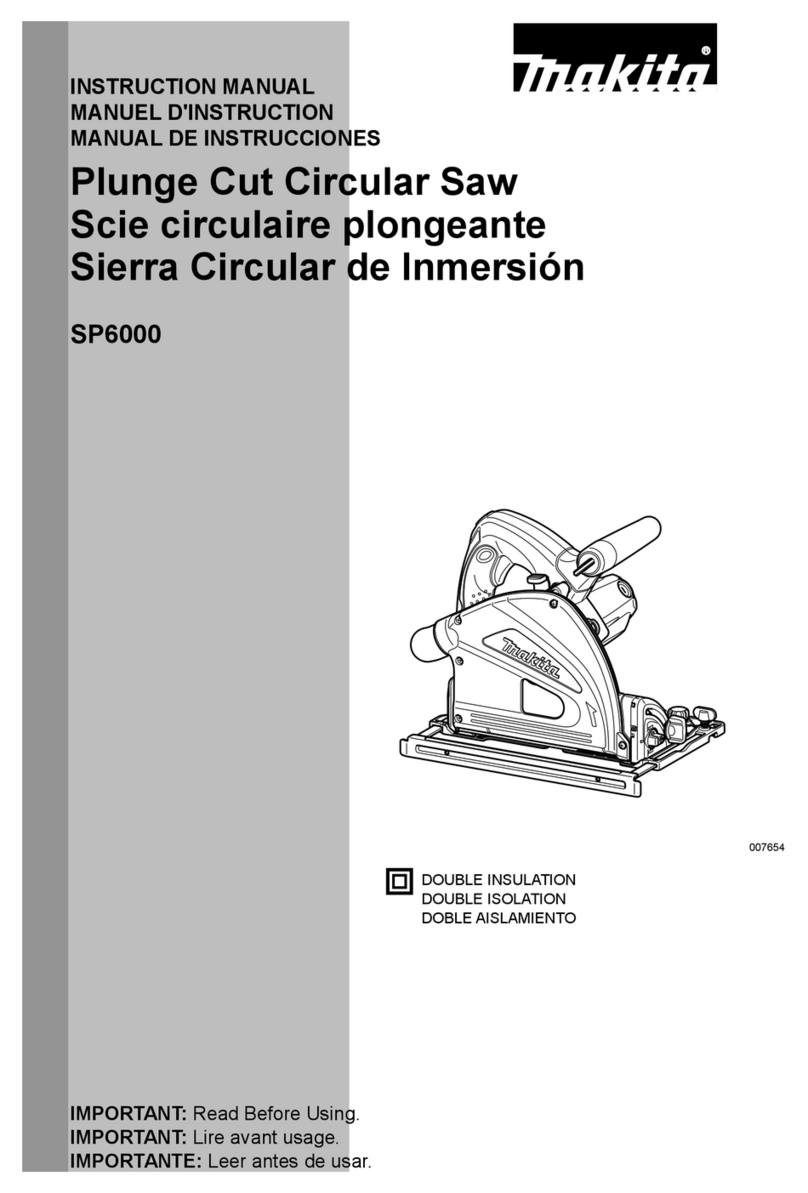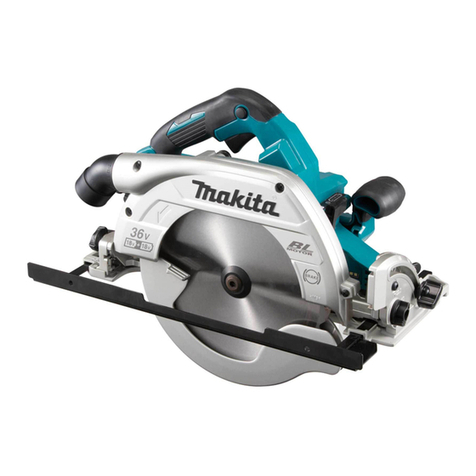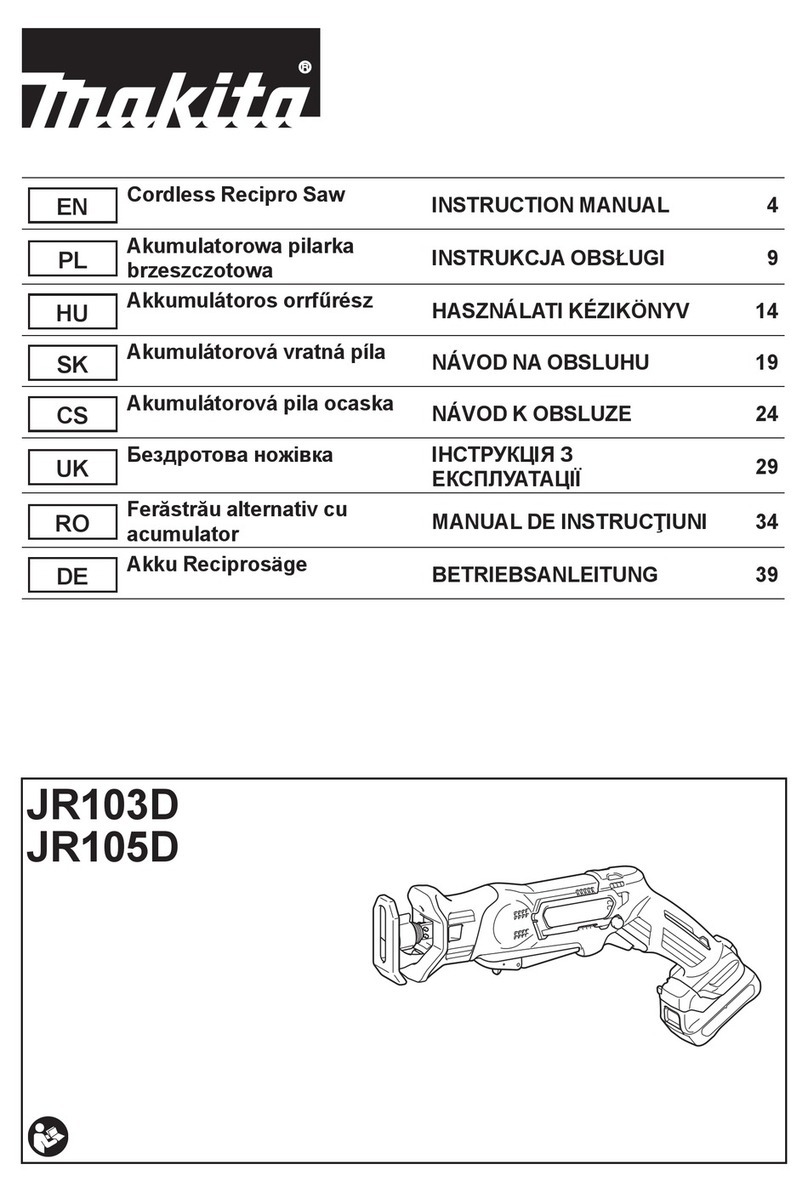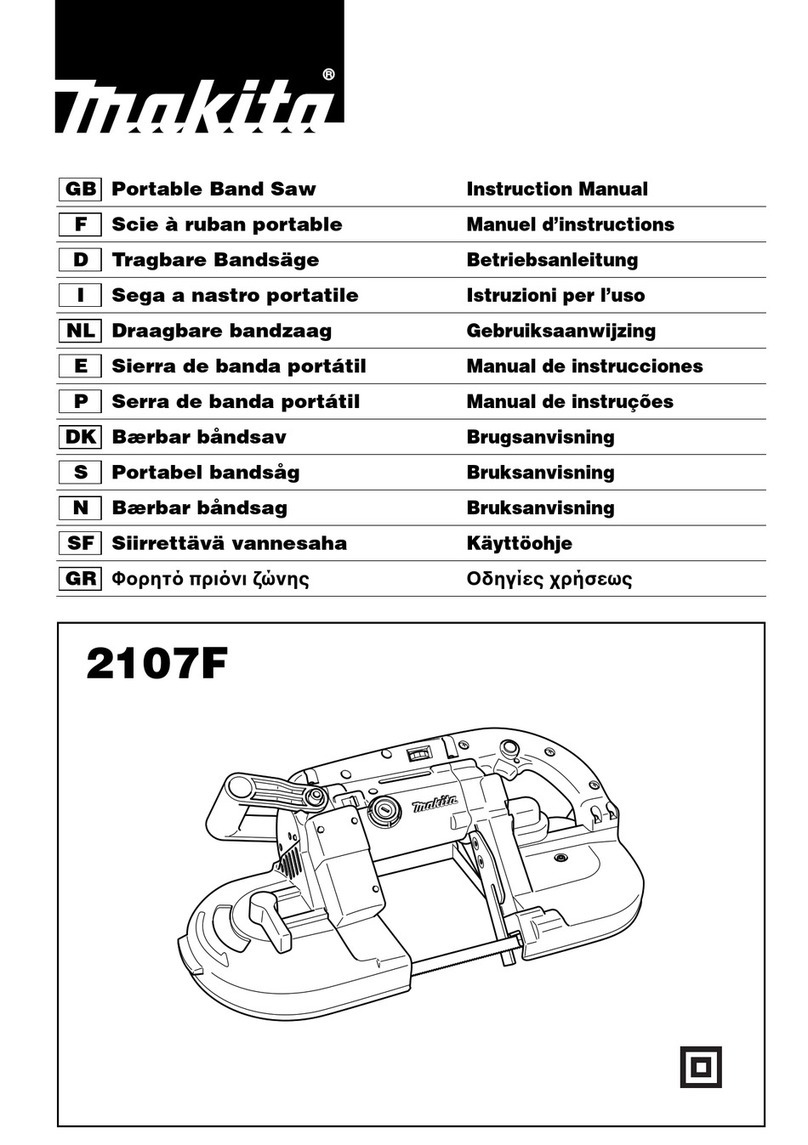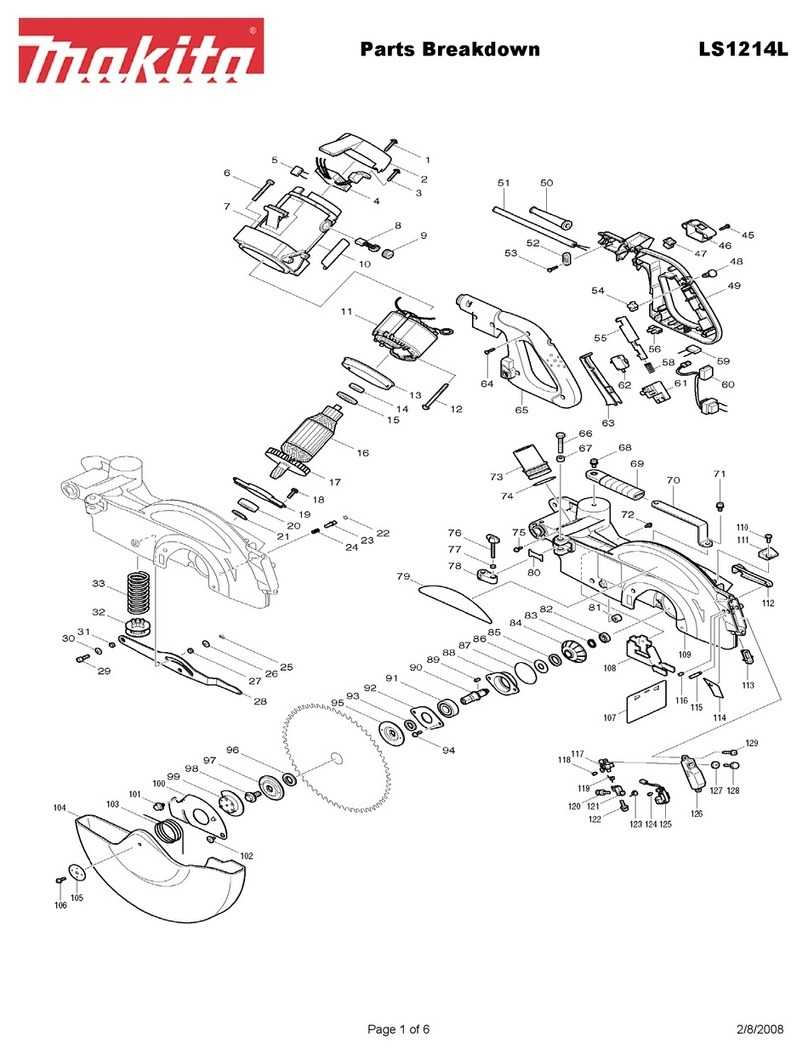10 ENGLISH
General Power Tool Safety Warnings
WARNING Read all safety warnings and all
instructions. Failure to follow the warnings and instruc-
tions may result in electric shock, re and/or serious
injury.
Save all warnings and instructions for
future reference.
ADDITIONAL SAFETY RULES FOR
TOOL
SAVE THESE INSTRUCTIONS.
1. Wear eye protection.
2. Do not use the tool in presence of ammable
liquids or gases.
3. NEVER use the tool with an abrasive cut-off
wheel installed.
4. Check the blade carefully for cracks or damage
before operation. Replace cracked or damaged
blade immediately.
5. Use only saw blades recommended by the
manufacturer and which conform to EN847-1,
and observe that the riving knife must not be
thicker than the width of the cut by the saw
blade and not thinner than the body of the
blade.
6. Always use accessories recommended in this
manual. Use of improper accessories such as
abrasive cut-off wheels may cause an injury.
7. Select the correct saw blade for the material to
be cut.
8. Do not use saw blades manufactured from
high speed steel.
9. To reduce the emitted noise, always be sure
that the blade is sharp and clean.
10. Use correctly sharpened saw blades. Observe
the maximum speed marked on the saw blade.
11. Clean the spindle, anges (especially the
installing surface) and hex nut before install-
ing the blade. Poor installation may cause
vibration/wobbling or slippage of the blade.
12. Use saw-blade guard and riving knife for every
operation for which it can be used, including
all through sawing operations. Always install
the blade guard following the instructions
out-lined in this manual. Through sawing oper-
ations are those in which the blade cuts com-
pletely through the workpiece as in ripping or
cross cutting. NEVER use the tool with a faulty
blade guard or secure the blade guard with a
rope, string, etc. Any irregular operation of the
blade guard should be corrected immediately.
13. Immediately reattach the guard and riving
knife after completing an operation which
requires removal of the guard.
14. Do not cut metal objects such as nails and
screws. Inspect for and remove all nails,
screws and other foreign material from the
workpiece before operation.
15. Remove wrenches, cut-off pieces, etc. from the
table before the switch is turned on.
16. NEVER wear gloves during operation.
17. Keep hands out of the line of the saw blade.
18. NEVER stand or permit anyone else to stand in
line with the path of the saw blade.
19. Make sure the blade is not contacting the
riving knife or workpiece before the switch is
turned on.
20. Before using the tool on an actual workpiece,
let it run for a while. Watch for vibration or
wobbling that could indicate poor installation
or a poorly balanced blade.
21. The tool should not be used for slotting, rab-
betting or grooving.
22. Replace table insert when worn.
23. NEVER make any adjustments while tool is
running. Disconnect tool before making any
adjustments.
24. Use a push stick when required. Push sticks
MUST be used for ripping narrow workpieces
to keep your hands and ngers well away from
the blade.
25. Always store the push-stick when it is not in
use.
26. Pay particular attention to instructions for
reducing risk of KICKBACK. KICKBACK is
a sudden reaction to a pinched, bound or
misaligned saw blade. KICKBACK causes
the ejection of the workpiece from the tool
back towards the operator. KICKBACKS CAN
LEAD TO SERIOUS PERSONAL INJURY. Avoid
KICKBACKS by keeping the blade sharp, by
keeping the rip fence parallel to the blade, by
keeping the riving knife and blade guard in
place and operating properly, by not releasing
the workpiece until you have pushed it all the
way past the blade, and by not ripping a work-
piece that is twisted or warped or does not
have a straight edge to guide along the fence.
27. Do not perform any operation freehand.
Freehand means using your hands to support
or guide the workpiece, in lieu of a rip fence or
miter gauge.
28. NEVER reach around or over saw blade.
NEVER reach for a workpiece until the saw
blade has completely stopped.
29. Avoid abrupt, fast feeding. Feed as slowly as
possible when cutting hard workpieces. Do not
bend or twist workpiece while feeding. If you
stall or jam the blade in the workpiece, turn
the tool off immediately. Unplug the tool. Then
clear the jam.
30. NEVER remove cut-off pieces near the blade
or touch the blade guard while the blade is
running.
31. Knock out any loose knots from workpiece
BEFORE beginning to cut.
32. Do not abuse cord. Never yank cord to discon-
nect it from the receptacle. Keep cord away
from heat, oil, water and sharp edges.
